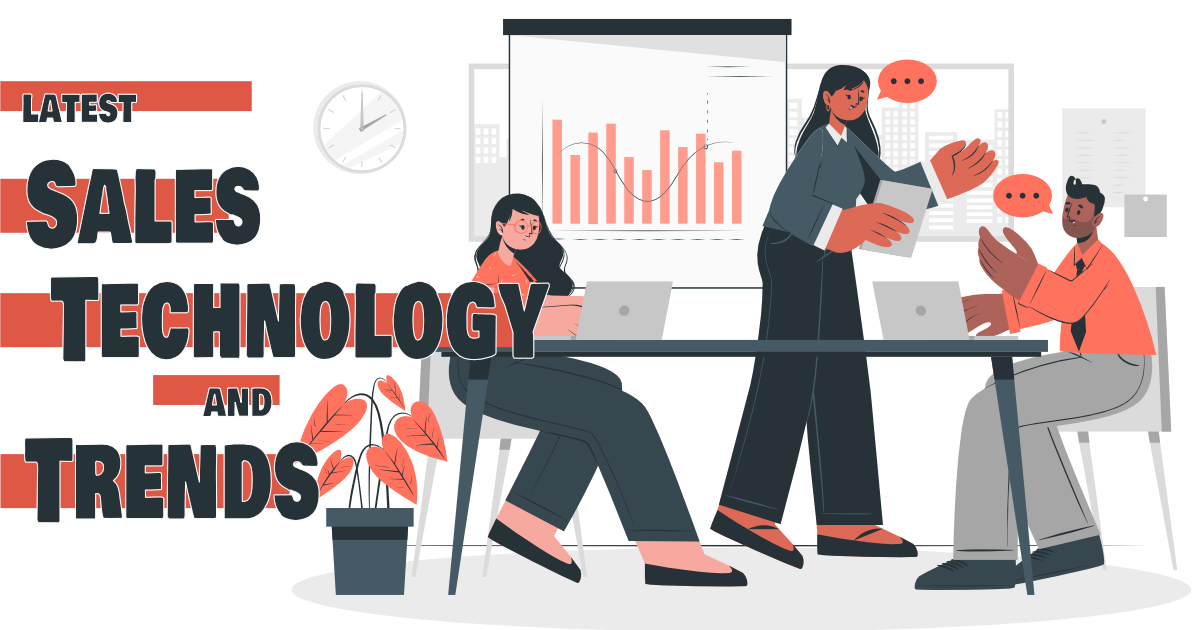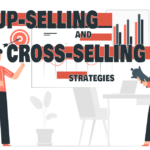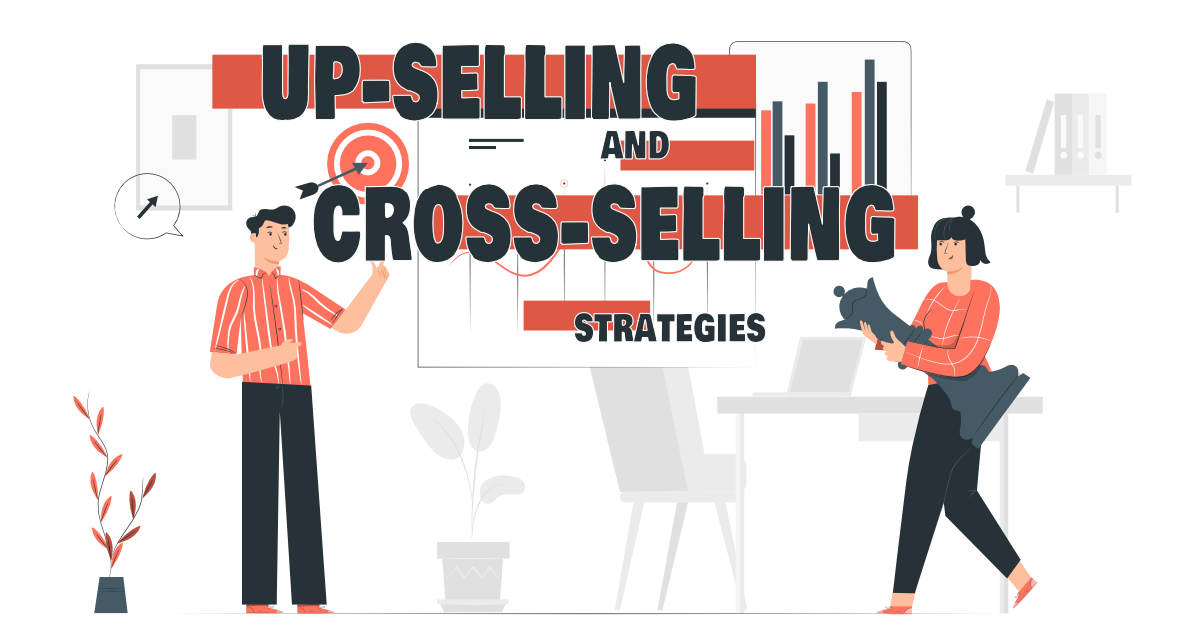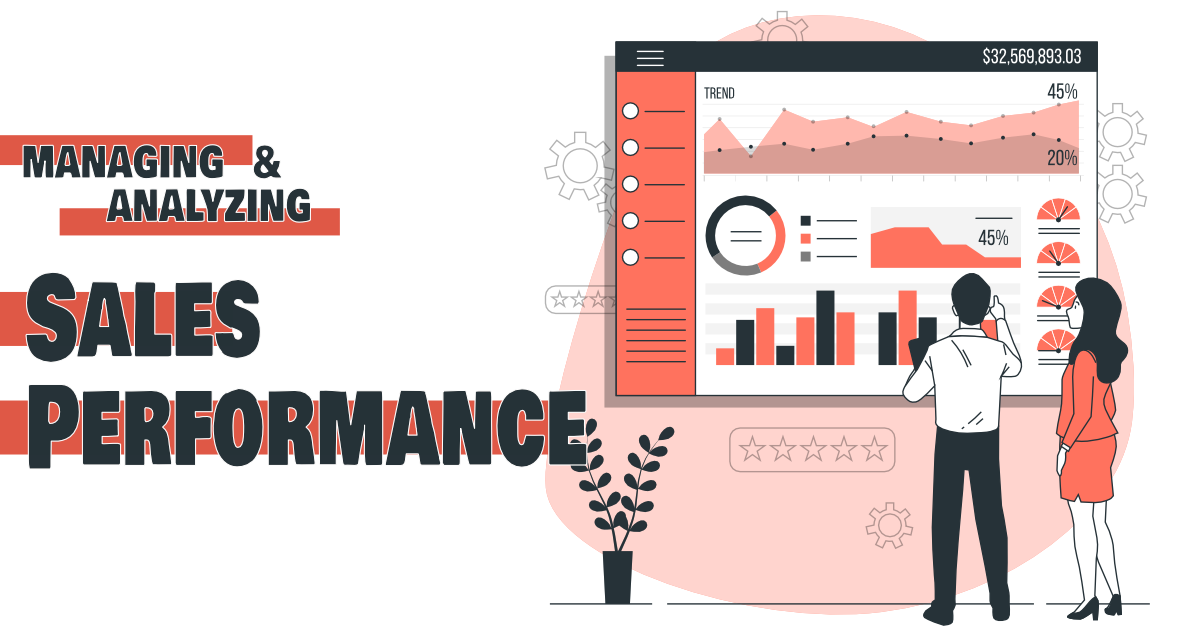In today’s fast-paced business world, staying on top of the latest sales technology and trends is crucial for small businesses looking to grow and thrive. From advanced CRM systems to cutting-edge marketing automation tools, there are a plethora of options available to help small business owners better understand and engage with their customers. In this article, we’ll explore some of the most effective sales technology and trends that small businesses can utilize to drive success and increase revenue.
Identifying and understanding the latest sales technology and trends
As a small business owner, it’s important to stay up-to-date on the latest sales technology and trends to stay competitive in today’s market. By identifying and utilizing the right tools and strategies, you can gain a significant advantage over your competitors and drive more revenue for your business. In this article, we’ll take a closer look at some of the most important sales technology and trends that small businesses should be aware of.
CRM Systems
Customer Relationship Management (CRM) systems are a must-have for any small business looking to improve their sales and customer engagement. These systems allow you to store and organize customer information, track sales and marketing efforts, and automate many of the day-to-day tasks associated with running a business.
One of the best examples of CRM system is Salesforce. Salesforce is a leading CRM platform that offers a wide range of features and integrations to help small businesses manage their customer interactions. By using Salesforce, small business owners can better understand their customers and target their sales efforts more effectively.
Best practice: Choose a CRM system that fits your business needs. A good CRM system should be easy to use, customizable, and integrate with other tools you already use.
Marketing Automation
Marketing automation is another key trend that small businesses should be aware of. These tools allow you to automate repetitive tasks, such as email marketing and social media management, so you can focus on more important aspects of your business.
One of the best examples of marketing automation tools is Hubspot. Hubspot offers a wide range of features to help small businesses automate their marketing efforts, including email marketing, social media management, and lead generation. By using Hubspot, small business owners can save time and resources while still reaching their target audience effectively.
Best practice: Choose a marketing automation tool that fits your business needs. A good marketing automation tool should be easy to use, customizable, and integrate with other tools you already use.
Social Media Platforms
Social media platforms are also becoming increasingly important for small businesses looking to reach new customers and drive sales. With billions of users worldwide, social media provides small businesses with an unprecedented opportunity to connect with potential customers and promote their products and services.
One of the best examples of social media platforms is Facebook. Facebook is one of the most popular social media platforms in the world, with over 2 billion active users. By creating a business page on Facebook, small business owners can reach new customers, promote their products and services, and engage with their audience in real-time.
Best practice: Choose a social media platform that fits your target audience. A good social media platform should be easy to use, customizable, and integrate with other tools you already use.
Lead Generation and Management
Lead generation and management are crucial for small businesses looking to grow their customer base. Lead generation tools can help small businesses identify potential customers and capture their contact information, while lead management tools help businesses organize and nurture leads until they are ready to make a purchase.
One of the best examples of lead generation and management tools is Marketo. Marketo is a powerful platform that allows small businesses to generate, nurture, and convert leads into customers. By using Marketo, small business owners can streamline their lead generation and management efforts and increase their chances of closing more sales.
Best practice: Choose a lead generation and management tool that fits your business needs. A good lead generation and management tool should be easy to use, customizable, and integrate with other tools you already use.
By understanding and utilizing the latest sales technology and trends, small businesses can gain a significant advantage over their competitors and drive more revenue for their business. Whether you’re looking to improve your customer engagement or automate your marketing efforts, there are a plethora of tools and strategies available to help you achieve your goals. With the right approach, you can take your small business to the next level and achieve success in today’s fast-paced business world.
Artificial Intelligence
Artificial intelligence (AI) is becoming increasingly important for small businesses looking to improve their sales and customer engagement. By leveraging AI, small businesses can automate repetitive tasks, gain valuable insights, and improve their customer interactions.
One of the best examples of AI in sales is Salesforce Einstein. Salesforce Einstein is an AI platform that can help small businesses automate repetitive tasks, such as lead scoring and email sorting, and gain valuable insights about their customers. By using Salesforce Einstein, small business owners can improve their sales and customer engagement without spending additional time and resources.
Best practice: Choose an AI platform that fits your business needs. A good AI platform should be easy to use, customizable, and integrate with other tools you already use.
Machine Learning
Machine learning (ML) is a subset of AI that allows small businesses to gain valuable insights from their data. By using ML, small businesses can predict customer behavior, identify patterns and trends, and improve their customer interactions.
One of the best examples of ML in sales is Zoho CRM. Zoho CRM is a platform that uses machine learning to help small businesses predict customer behavior, identify patterns and trends, and improve their customer interactions. By using Zoho CRM, small business owners can gain valuable insights and improve their sales and customer engagement.
Best practice: Choose a Machine Learning platform that fits your business needs. A good Machine Learning platform should be easy to use, customizable, and integrate with other tools you already use.
By implementing and utilizing artificial intelligence and machine learning in sales, small businesses can improve their sales and customer engagement without spending additional time and resources. By automating repetitive tasks and gaining valuable insights, small business owners can focus on what they do best – growing their business.
Virtual Reality
Virtual reality (VR) is a powerful tool that small businesses can use to improve their sales and customer engagement. VR allows small businesses to create immersive experiences for their customers, giving them a better understanding of the products or services they are interested in.
One of the best examples of VR in sales is Lowe’s Holoroom. Lowe’s Holoroom is a virtual reality tool that allows customers to design and visualize their home renovation projects before they begin. By using Lowe’s Holoroom, customers can better understand their options and make more informed decisions, which can lead to increased sales for the business.
Best practice: Choose a VR platform that fits your business needs. A good VR platform should be easy to use, customizable, and integrate with other tools you already use.
Augmented Reality
Augmented reality (AR) is another powerful tool that small businesses can use to improve their sales and customer engagement. AR allows small businesses to overlay digital information on the physical world, giving customers a better understanding of the products or services they are interested in.
One of the best examples of AR in sales is IKEA Place. IKEA Place is an AR app that allows customers to visualize furniture in their own home before they make a purchase. By using IKEA Place, customers can better understand how the furniture will look and fit in their space, which can lead to increased sales for the business.
Best practice: Choose an AR platform that fits your business needs. A good AR platform should be easy to use, customizable, and integrate with other tools you already use.
By utilizing virtual reality and augmented reality in sales and marketing, small businesses can improve their sales and customer engagement by providing customers with immersive experiences that give them a better understanding of the products or services they are interested in. By giving customers more information and allowing them to visualize their options, small business owners can increase their chances of closing more sales.
Social Media
Social media is a powerful tool that small businesses can use to improve their sales and customer engagement. By leveraging social media, small businesses can reach a wider audience and connect with their customers in new and innovative ways.
One of the best examples of social media in sales is the use of Instagram shoppable posts. Instagram shoppable posts allow small businesses to sell their products directly on the platform, making it easy for customers to purchase items they are interested in. This can lead to increased sales and customer engagement for the business.
Best practice: Choose a social media platform that fits your business needs. A good social media platform should be easy to use, customizable, and integrate with other tools you already use.
Mobile
Mobile sales are becoming increasingly important for small businesses looking to improve their sales and customer engagement. By leveraging mobile, small businesses can reach customers where they are, making it easy for them to purchase items they are interested in.
One of the best examples of mobile sales is the use of mobile wallet apps. Mobile wallet apps allow small businesses to sell their products directly to customers through the app, making it easy for customers to purchase items they are interested in. This can lead to increased sales and customer engagement for the business.
Best practice: Choose a mobile platform that fits your business needs. A good mobile platform should be easy to use, customizable, and integrate with other tools you already use.
By understanding and utilizing the latest social media and mobile sales trends, small businesses can improve their sales and customer engagement by reaching customers where they are and making it easy for them to purchase items they are interested in. By leveraging the latest tools and technologies, small business owners can increase their chances of closing more sales and growing their business.
Analytics
Analytics is a powerful tool that small businesses can use to improve their sales and customer engagement. By leveraging analytics, small businesses can gain valuable insights into their customer behavior, identify patterns and trends, and improve their sales and customer engagement.
One of the best examples of analytics in sales is Google Analytics. Google Analytics is a free web analytics service that allows small businesses to track and analyze their website traffic and customer behavior. By using Google Analytics, small business owners can gain valuable insights into their customer behavior and improve their sales and customer engagement.
Best practice: Choose an analytics platform that fits your business needs. A good analytics platform should be easy to use, customizable, and integrate with other tools you already use.
Big Data
Big data is a powerful tool that small businesses can use to improve their sales and customer engagement. By leveraging big data, small businesses can gain valuable insights into their customer behavior, identify patterns and trends, and improve their sales and customer engagement.
One of the best examples of big data in sales is IBM Watson. IBM Watson is a platform that allows small businesses to gain valuable insights from their big data. By using IBM Watson, small business owners can improve their sales and customer engagement by identifying patterns and trends in their customer behavior.
Best practice: Choose a big data platform that fits your business needs. A good big data platform should be easy to use, customizable, and integrate with other tools you already use. Additionally, it is important to have the necessary skills and resources to effectively analyze the data and extract actionable insights.
By utilizing analytics and big data to inform sales strategies, small businesses can gain valuable insights into their customer behavior, identify patterns and trends, and improve their sales and customer engagement. By leveraging these tools, small business owners can make data-driven decisions that can help them optimize their sales and marketing efforts, increase conversions, and ultimately grow their business.
Chatbots
Chatbots are computer programs that simulate conversation with human users. They are becoming increasingly popular in the sales and customer engagement space, as they can be used to automate repetitive tasks and improve customer engagement.
One of the best examples of chatbots in sales is the use of chatbots on e-commerce websites. Chatbots can be used to answer customer questions, provide product recommendations, and even complete sales transactions. This can lead to increased sales and customer engagement for the business.
Best practice: Choose a chatbot platform that fits your business needs. A good chatbot platform should be easy to use, customizable, and integrate with other tools you already use. Additionally, make sure your chatbot is able to understand and respond to the natural language of your customers, and that it can transfer the conversation to a human agent if necessary.
Conversational AI
Conversational AI is a subset of Artificial Intelligence that aims to simulate human-like conversations. It is becoming increasingly popular in the sales and customer engagement space, as it can be used to automate repetitive tasks and improve customer engagement.
One of the best examples of conversational AI in sales is the use of virtual assistants. Virtual assistants can be used to answer customer questions, provide product recommendations, and even complete sales transactions. This can lead to increased sales and customer engagement for the business.
Best practice: Choose a conversational AI platform that fits your business needs. A good conversational AI platform should be easy to use, customizable, and integrate with other tools you already use. Additionally, make sure your conversational AI is able to understand and respond to the natural language of your customers, and that it can transfer the conversation to a human agent if necessary. It’s also important to train your conversational AI with a diverse range of data to understand different accents and dialects.
By using chatbots and conversational AI in sales, small businesses can automate repetitive tasks, improve customer engagement and ultimately increase sales. By leveraging these technologies, small business owners can free up time to focus on more important tasks and make the customer experience more efficient and personalized.
Video Marketing
Video marketing is becoming increasingly popular in the sales and marketing space, as it allows businesses to connect with their customers in a more personal and engaging way. By creating high-quality, informative videos, small businesses can increase their visibility, attract more customers, and ultimately increase sales.
One of the best examples of video marketing in sales is the use of product demonstration videos. By creating videos that demonstrate the features and benefits of a product, small businesses can help customers understand how the product works and why they should buy it. This can lead to increased sales and customer engagement.
Best practice: When creating video content, make sure it is of high quality and provides value to the viewer. Also, make sure the video is easily shareable and that it can be found on multiple platforms such as YouTube, Facebook, and Instagram. Additionally, add clear calls to action in the video that encourage viewers to make a purchase or visit your website.
Live Streaming
Live streaming is becoming increasingly popular in the sales and marketing space, as it allows businesses to connect with their customers in real-time. By live streaming events, product demonstrations, or Q&A sessions, small businesses can increase their visibility, attract more customers, and ultimately increase sales.
One of the best examples of live streaming in sales is the use of live Q&A sessions. By hosting live Q&A sessions, small businesses can answer customer questions in real-time, provide product demonstrations, and even close sales. This can lead to increased sales and customer engagement.
Best practice: When live streaming, make sure to have a clear agenda and stick to it. Also, make sure that the video quality is high and that the audio is clear. Additionally, have a clear call to action at the end of the live stream that encourages viewers to make a purchase or visit your website.
By utilizing video marketing and live streaming in sales, small businesses can connect with customers in a more personal and engaging way, ultimately increasing visibility and sales. These tools are a great way to showcase your products and services, and to educate your potential customers.
Virtual Events
Virtual events are becoming increasingly popular as a way to connect with customers and generate leads. They allow small businesses to host events online, such as conferences, trade shows, and product launches, without the need for attendees to travel. This can save small businesses time and money, while also allowing them to reach a wider audience.
One of the best examples of virtual events in sales is the use of virtual trade shows. By hosting virtual trade shows, small businesses can showcase their products and services, connect with potential customers, and generate leads. This can lead to increased sales and customer engagement.
Best practice: When hosting virtual events, make sure to have a clear agenda, and stick to it. Also, make sure that the video quality is high, and that the audio is clear. Additionally, have a clear call to action at the end of the event that encourages attendees to make a purchase or visit your website.
Webinars
Webinars are becoming increasingly popular as a way to connect with customers and generate leads. They allow small businesses to host events online, such as presentations, workshops, and Q&A sessions, without the need for attendees to travel. This can save small businesses time and money, while also allowing them to reach a wider audience.
One of the best examples of webinars in sales is the use of product demonstrations. By hosting webinars that demonstrate the features and benefits of a product, small businesses can help customers understand how the product works and why they should buy it. This can lead to increased sales and customer engagement.
Best practice: When hosting webinars, make sure to have a clear agenda, and stick to it. Also, make sure that the video quality is high and that the audio is clear. Additionally, have a clear call to action at the end of the webinar that encourages attendees to make a purchase or visit your website.
By utilizing virtual events and webinars for sales and lead generation, small businesses can connect with customers and generate leads in a cost-effective and efficient way. These tools allow small businesses to reach a wider audience and increase visibility, ultimately leading to increased sales and customer engagement.
Implementing and using sales gamification
Sales gamification is the use of game mechanics and design techniques in sales and marketing efforts to increase engagement and motivation. By gamifying the sales process, small businesses can make it more engaging and fun for customers, leading to increased sales and customer engagement.
One of the best examples of sales gamification is the use of sales leaderboards. Sales leaderboards can be used to create a sense of competition among sales teams, increasing motivation and engagement. This can lead to improved sales performance and increased revenue for the business.
Best practice: Use game mechanics that align with your sales process and goals. Make sure to keep the game simple and easy to understand, and ensure that the rewards for winning are clear and meaningful.
By implementing and using sales gamification, small businesses can increase engagement and motivation among their customers and sales teams, leading to improved sales performance and increased revenue. By making the sales process more engaging and fun, small business owners can increase conversions and ultimately grow their business.
Understanding and utilizing the latest e-commerce trends
E-commerce is an essential aspect of modern business, and it is important for small businesses to understand and utilize the latest trends to stay competitive. By leveraging the latest e-commerce trends, small businesses can improve their sales and customer engagement, and ultimately grow their business.
One of the best examples of the latest e-commerce trends is the use of subscription-based models. Subscription-based models allow small businesses to create recurring revenue streams by offering customers access to products or services on a regular basis. This can lead to increased sales and customer engagement for the business.
Best practice: Choose an e-commerce platform that fits your business needs. A good e-commerce platform should be easy to use, customizable, and integrate with other tools you already use. Additionally, make sure your website is mobile-friendly, it has a seamless checkout process, and if you are offering subscription-based models, make sure you have an easy-to-use system for canceling and pausing subscriptions.
Another trend is the use of personalized recommendations. By using data and machine learning, small businesses can use customer data to make personalized product recommendations, leading to increased sales and customer engagement.
Another trend is the use of live streaming. Live streaming allows small businesses to connect with customers in real-time, leading to increased engagement and sales.
By understanding and utilizing the latest e-commerce trends, small businesses can improve their sales and customer engagement, and ultimately grow their business. By leveraging the latest tools and technologies, small business owners can increase their chances of closing more sales and growing their business.
Utilizing account-based marketing (ABM) and account-based sales (ABS)
Account-Based Marketing (ABM):
ABM is a strategy that focuses on targeting specific accounts in order to generate more qualified leads and increase sales. It is a highly targeted approach that allows small businesses to focus their marketing efforts on specific accounts rather than casting a wide net.
One of the best examples of ABM is using targeted ads to reach specific decision-makers in a particular company. By creating personalized ads that speak directly to the specific needs of a particular account, small businesses can increase the chances of generating leads and closing sales.
Best practice: When using ABM, make sure to start small and focus on a specific set of accounts. Also, make sure to segment your accounts into different groups and tailor your messaging accordingly. Additionally, use data and analytics to track the success of your ABM campaigns and adjust as needed.
Account-Based Sales (ABS):
ABS is a strategy that focuses on targeting specific accounts in order to generate more qualified leads and increase sales. It is a highly targeted approach that allows small businesses to focus their sales efforts on specific accounts rather than casting a wide net.
One of the best examples of ABS is using targeted sales campaigns to reach specific decision-makers in a particular company. By creating personalized sales campaigns that speak directly to the specific needs of a particular account, small businesses can increase the chances of generating leads and closing sales.
Best practice: When using ABS, make sure to start small and focus on a specific set of accounts. Also, make sure to segment your accounts into different groups and tailor your messaging accordingly. Additionally, use data and analytics to track the success of your ABS campaigns and adjust as needed.
By utilizing account-based marketing (ABM) and account-based sales (ABS) small businesses can increase the chances of generating leads and closing sales by focusing their efforts on specific accounts. This highly targeted approach allows small businesses to increase visibility and reach decision-makers in specific companies, ultimately leading to increased sales and customer engagement.
Utilizing sales enablement tools for training, coaching, and knowledge management
Sales enablement tools are designed to support sales teams by providing them with the resources and training they need to effectively engage with prospects and customers. These tools can include training programs, coaching programs, and knowledge management platforms.
One of the best examples of a sales enablement tool is a sales enablement platform that includes a library of sales resources, such as presentations, case studies, and product demos. This type of platform allows sales teams to easily access the resources they need to close deals and can also be used for training and coaching.
Another example of a sales enablement tool is a mobile app that provides real-time access to customer data and analytics. This allows sales teams to stay informed about customer behavior and make data-driven decisions.
Best practice: When using sales enablement tools, make sure to align them with your overall sales strategy. Also, make sure to train your sales team on how to use the tools effectively and provide ongoing coaching. Additionally, use analytics to track the effectiveness of your sales enablement tools and make adjustments as needed.
In summary, Utilizing sales enablement tools can be a powerful way for small businesses to improve sales performance. These tools can provide resources, training, and coaching for sales teams, as well as access to customer data and analytics. By aligning these tools with their overall sales strategy, small businesses can improve the performance and productivity of their sales teams.
Utilizing sales intelligence tools for lead generation and account research
Sales intelligence tools are designed to help sales teams gather and analyze data on prospects and customers. This information can be used to identify new leads, conduct account research, and create targeted sales campaigns.
One example of a sales intelligence tool is a lead generation platform that uses data mining and web scraping to identify potential customers based on specific criteria. This type of platform can provide sales teams with a steady stream of new leads to pursue.
Another example is a account research platform that can provide sales teams with detailed information on specific companies and their key decision makers. This information can be used to create targeted sales campaigns and increase the chances of closing a deal.
Best practice: When using sales intelligence tools, make sure to maintain data quality by regularly cleaning and updating your contact database. Also, make sure to use the data in an ethical and legal way. Additionally, Use the data to not only generate leads but also to create targeted account-based marketing campaigns.
In summary, Utilizing sales intelligence tools can be a powerful way for small businesses to improve lead generation and account research. By gathering and analyzing data on prospects and customers, small businesses can identify new leads and create targeted sales campaigns. To get the most value out of these tools, it’s important to maintain data quality and use the data in an ethical and legal way.
Continuously monitoring and staying up-to-date with the latest sales technology and trends
Staying up-to-date with the latest sales technology and trends is crucial for small businesses looking to stay competitive. By monitoring the market and experimenting with new tools and techniques, small businesses can identify new opportunities and improve their sales performance.
One way to stay up-to-date is to regularly attend industry events and conferences. These events provide a great opportunity to learn about new sales technology and trends and network with other professionals in the field.
Another way to stay up-to-date is to subscribe to industry publications and blogs. These resources can provide valuable insights and information on the latest sales technology and trends.
Best Practice: When monitoring and staying up-to-date with the latest sales technology and trends, it’s important to be selective about which tools and techniques to adopt. Not all tools are suitable for every business and it’s important to evaluate whether a particular tool or trend aligns with your business strategy and goals. Additionally, create a budget and timeline for experimenting with new tools and techniques.
In summary, Continuously monitoring and staying up-to-date with the latest sales technology and trends is crucial for small businesses looking to stay competitive. By attending industry events, subscribing to industry publications and blogs, and experimenting with new tools and techniques, small businesses can identify new opportunities and improve their sales performance. It is important to be selective about which tools and techniques to adopt and align them with your business strategy and goals.













